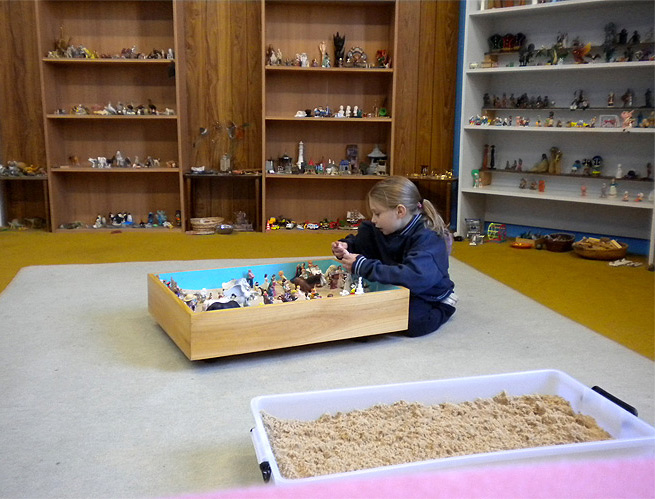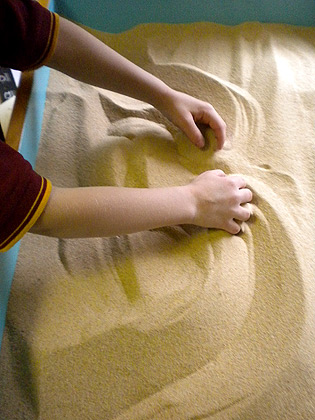Counselling
History
Over 70 years ago Dora Kalff of Switzerland, having been influenced by Margaret Lowenfeld a pioneering child psychoanalyst, and Carl Jung a Swiss psychiatrist, developed Sandplay Therapy. This is now recognised and practised successfully throughout the world.
How does Sandplay Therapy work?
Play enables fantasies to be acted out, externalises the inner world, traumas can be reworked and repressed needs can be expressed symbolically and safely.
Individual, non-threatening play is an important element in this type of therapy and it allows you to work at your own pace and to 'drop your guard' or open up.
In a shallow rectangular tray half filled with sand, you are given the opportunity to create whatever shape you want in the sand, and populate this space with your selection from hundreds of tiny objects and figures in order to create a picture of your 'inner world'.
The activity is multidimensional - using eyes, hands, body, mind, and spirit and allows you to participate in a non-verbal creative process.
Sandplay Therapy allows you to work in a safe environment and it is highly effective in reducing emotional causes behind difficult behaviours.
“My husband and I were having difficulties with our relationship at the time and we were separated with my husband living away from the family home. Before I attended your sand-play with our two boys my eldest son was struggling with his emotions and feeling sad and confused. Our youngest son was struggling with anger and would have angry outbursts almost daily. My experience of doing the few sessions that the boys attended I felt both were more settled and the anger outbursts had settled. Both boys loved going to sand-play and to this day they still ask me “Can we go back to that lady's place with the sand and toys”? I feel they felt it was their special room where they could play uninterrupted on their own in a very calm and peaceful place where they either interacted or played on their own. I believe teaching my youngest son to physically release his anger was really helpful.”
Christine, Shepparton (2009)
The Counsellor
As a counsellor I act as a companion, guide and facilitator.
Also I observe the play without direction or interpretation, responding only to comments by the sandplayer.

Sandplay Therapy is carried out in a confidential, non-judgmental and nurturing environment.
“A …‘safe/protected space’ is provided allowing you to express feelings and experiences. In this environment you are free to direct activity in the sandtray and the counsellor provides an opportunity for the emergence of the person’s natural, inbuilt, intelligent movement toward wholeness.” (Pearson & Wilson, 2001)
Who is Sandplay Therapy suitable for?
For over seventy-five years it has been proven to be suitable for any age and all cultural groups.
What can Sandplay Therapy help with?

It assists with:
- Angry and aggressive behaviour
- Unexplained anxiety and fears
- Nightmares
- Oppositional Defiant Disorder
- Frequent crying
- Panic attacks
- Bullying
- Bedwetting
- Nail biting
- Sibling rivalry
- Abuse
- Grieving
- Academic improvement
- Relationships
- Loss and grief
- Attention deficits
- Behaviour management
- Family Issues
- Language and communication
If you are thinking of Sandplay Therapy and what benefits it would have for you or you want to know a little more please phone or email Neta.
“Neta I found your sandplay course a great help to me in my time of need. I find it very hard to open up and communicate but the sand brought out my inner thoughts without having to find the words to describe how I was feeling. I still have to make myself look at the positive things in life and get on with what good things I have. I look at the time I shared with you and find comfort.”
Edie, Tatura (2010)
